Snowmobile Ice Safety: Lakes, Your Friend or Enemy
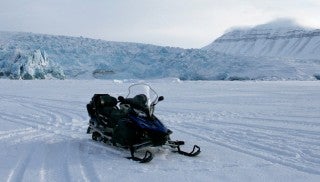
Don't take ice safety lightly
Every year I see the same thing; people chomping at the bit to ride their sleds. They start with low snow conditions on soft ground, damaging their carbides, skis, studs, tracks, a-arms, and spending their hard earned money. Hey, it’s great for parts sales, and yes it’s fun.
But then the lakes start to freeze and safety gets more serious. Ice safety is something that often gets overlooked.
See, I grew up on one of Georgian Bay’s 30,000 islands. Georgian Bay is known as the “6th Great Lake” because it is a part of Lake Huron/Michigan. Our Home on Isabella Island is located in the South Channel, just outside the Port of Parry Sound (Party Sound), which is located in the Heart of Georgian Bay’s 30,000 islands and surrounded by endless inland lakes.
This is one of the most rugged and unforgiving and beautiful bodies of water in the world, boasting the world’s oldest galcier dropped rocks, and huge depth changes. Flat landers, pffft. You may think this article doesn’t apply to your smaller, more shallow, calm lake, but I hope you think extreme safety tips instead, and in case you come visit us of course!
I too was always chomping at the bit, but I had to wait. When we arrived home from Christmas we had work to do before getting the sleds out. Then we had to snowshoe our portage trail to get our ’79 Kawaski Drifter and ’76 Sno*Jet SST 440 out, so that my little Sister Charlene and I could spend endless enjoyable hours packing the trail with our 292 Lynx II.
Once all of that happened, it was time to check the ice thicknesses. Dad, Buckeye (our massive Golden Retriever, our bush defender), and I would leave the sleds on shore and start chopping holes. Regardless of how good we thought the ice was, we cleared the deep snow and chopped holes. As we learned thicknesses, we moved further away from shore. And the most critical part of this ice safety process? Checking the “bad spots” at the “points” (island tips) where the ice was always thinner than everywhere else. More detail on those spots below.
There are many different “forms/types” of ice and it’s rarely a consistant thickness (where I’m from), so don’t trust charts telling you how many inches are safe, that’s a general guide. I’ve seen 6″ of ice only feet away from only 1″, and I’ve seen 6+” of soft ice give way and a sled roll under a dock at one winter. Gain experience, be smart, and be safe whilst having fun, please.
Early Season Ice Formation
Ice always begins to form at the shorline first. That’s because it’s shallow and freezes along with the shoreline which is exposed and often wet. As lakes freeze the shoreline is always the thickest. This can be a real problem for those that don’t continue to chop holes and check thickness further out because at the beginning of the year the middle of the lake will not be as thick as the shoreline. Especially in the bad spots.
This early ice season can become a nightmare for many families. Let me tell you a story. On a local inland lake one New Year’s, an amazing and well liked father that had been ice fishing the shoreline with his kids that day decided he “needed” to be the first one across the lake. Shortly after midnight everyone at the New Year’s Eve party watched him tear off…..he never returned.
Mid-Season Ice
It’s rare that I’ve traveled lakes by snowmobile and not had to pay close attention to mid-season conditions. For example, beyond ice conditions, watch intently for left over “drag race humps” left in poorly chosen high traffic spots. And lakes that have a consistent depth and remain calm are often very safe. But you should always be looking for signs.
You may not be thinking about ice safety when the ice appears good, but there are many factors under or in the ice that will affect ice. Points of land, rivers running into lakes, rocks, shoals, trees in the water, drift wood/trees frozen into the ice from a violent freeze-up, shallow spots, swamps, bull rushes, docks, and more are all a source of water turbulence and heat/insulation. These are the hazards you are looking for, even during the Summer when you’re boating. Know your body of water.
Conditions change hourly, not daily. Even many of Ontario’s 250,000 inland lakes experience pressure cracks. Wind currents can change quickly, increasing or decreasing water levels that will affect ice conditions immediately, and you may not even notice.
My favourite example to explain that “good looking ice” is never safe is this; if there is a shoal/rock/shallow spot a few feet under the ice, water currents will hit that shoal and the current will go over top of the shoal, hit the underside of the ice, and rot/wash away the ice quickly. It may look white and strong on top, but it may be a soft 4″ underneath. And then you watch your buddy and his sled fall through while you’re taking a break. You could have stopped in a safer spot, or on shore.
What to do/not do and look for:
- Points of islands/land, known shoals, rivers entering the lake, trees, bullrushes, docks
- Know these spots and never stop in there
- Pick a better spot, or stop on shore
- Look for “rot” which are most often dark spots on the ice
- Often these spost be noticable as bare and glare because the heat will melt snow and freeze into glare in those spots
- They’ll often be bare and frozen when they’re strong and “safe”
- Pressure cracks: save your speed runs for spots that you’ve checked and are known to be safe
- Simply be aware of these spots
- Study them in the Summer when boating
- Remember that those fishing honey holes are often located at a source of heat
- Know these spots and never stop in there
- Never stop right at the shoreline, especially in the Spring
- Don’t take silly chances – puddle jumping should be reserved for safe spots, warm weather, with many people around that actually have the skills to help if you sink…yet I don’t always live by my own rules, not going to lie here
End of Season Ice
Now I’m sitting here dreaming of warm, sunny March Break family & local ice parties. Those times are often when you need to be the most aware of ice safety, even though it’s warm. All of the hazards I’ve listed will rot the ice in the hazard spots before they become obvious. Watch out at the shoreline! We’ve all seen people floating around on safe icebergs with water surrounding them. The heat at the shoreline will often melt the shoreline ice first, but you already know this.
Conclusion
Originally I was going to take pictures this year and write this next fall, but if I can help even one person learn and stay safe this Winter, well that’s more important than pretty pictures. Besides, reading makes you think and your mind will build your own pictures. Regardless, save this article and look back to it and I will add pictures as I take them. Hopefully young riders will read this and always come home to their parents like I did.
Thanks & Sincerely,
“Random” Ryan Tarrant 😉



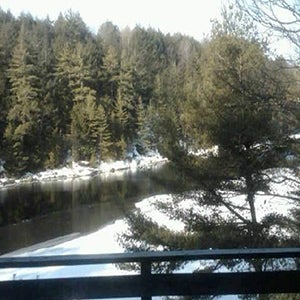
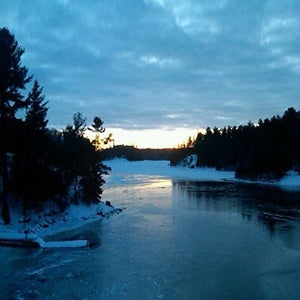
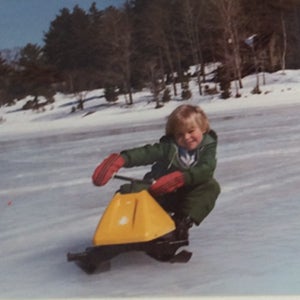
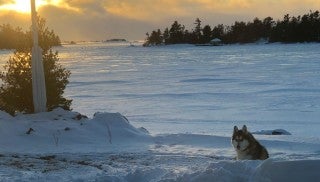
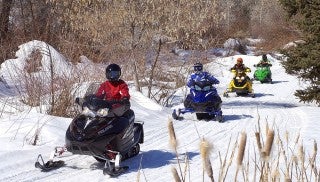



 Your Privacy Choices
Your Privacy Choices